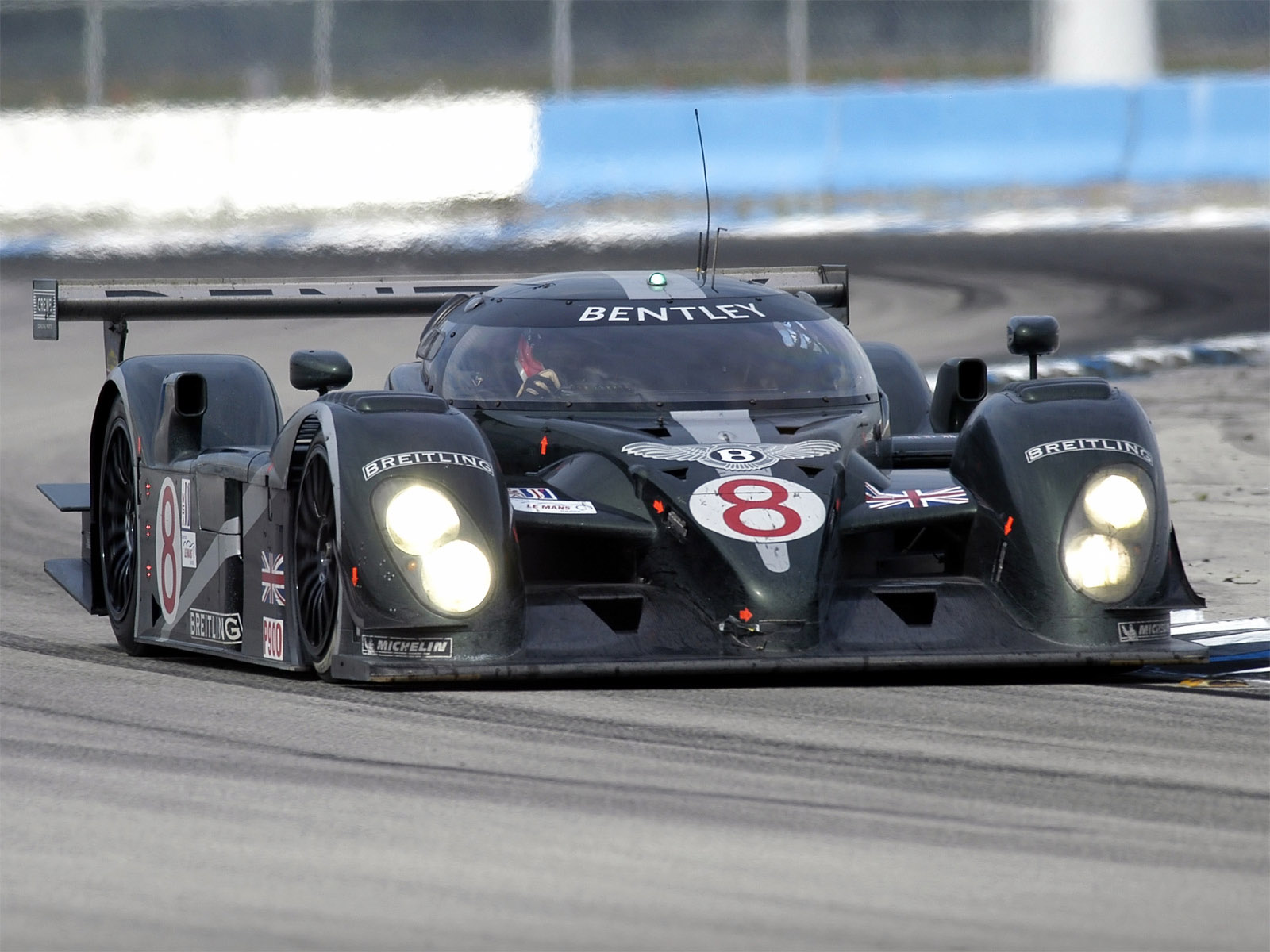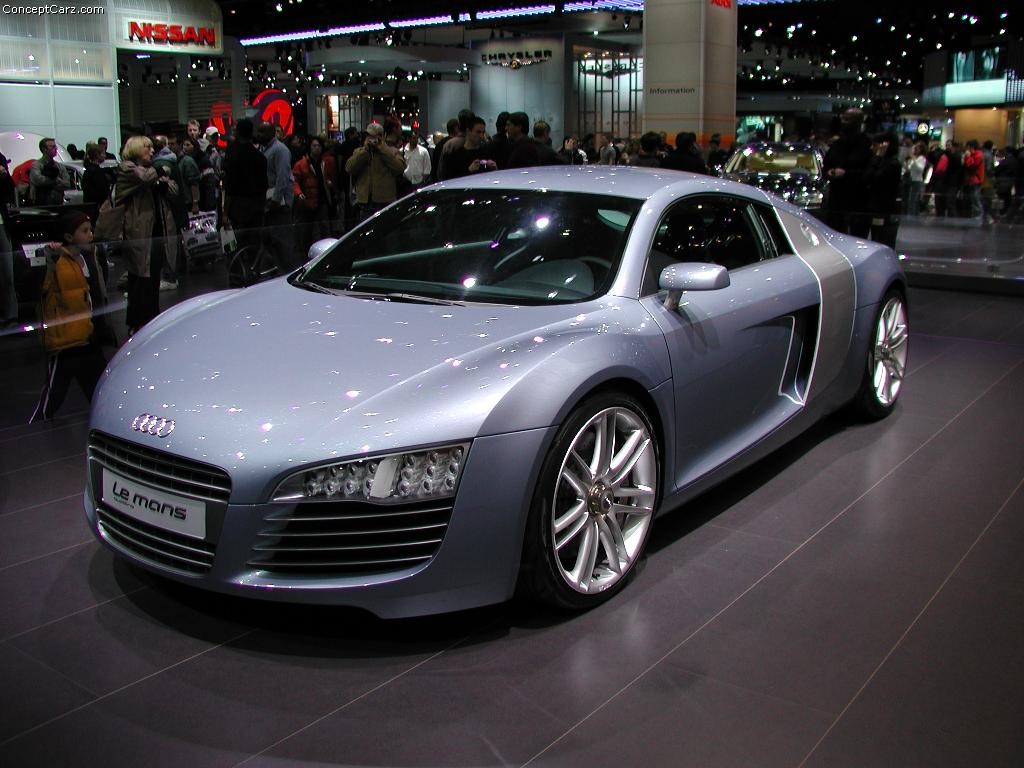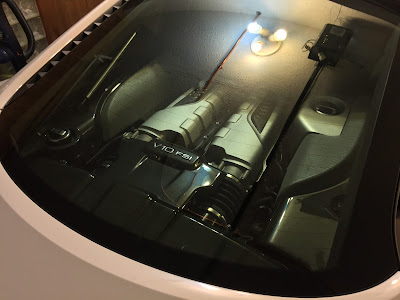As promised, here is my short blog on my trip from Chicago to San Diego, CA.
Unfortunately, the trip was cut short due to a sore throat, but otherwise for the five-day trip I had a blast. And best of all, NO tickets!!! Not that I had been speeding...well...maybe a little, but only when safe and in unpopulated areas (which was most of Kansas and Utah). On second thought, my official, on-the-record stance is that I had obeyed the speed limit in all circumstances. Period.
I'm grouping posts by interesting areas, since the first 2 days were a bit boring. Chicago to St. Louis was the usual stuff, and St. Louis to west Kansas was long and tedious, just as I had remembered four years ago. I didn't bother taking any pics of St. Louis since there's not much to see (for me, anyway), so the media begins on Tuesday morning and ends in west Kansas.
Since I had spent most of my time wedged inside my car, I suppose it might be a good idea to explain just what the heck the Audi R8 is. You may have seen it in the Iron Man movies, and some of you...might know that it's what Christian Grey drives from 50 Shades of Grey...that's right, you know who you are! To be honest, the history behind the R8, along with Audi's largely unsung achievement over the last 15 years, deserves a partial overview since most people are unaware of just how much Audi has contributed to emissions standards and fuel efficiency. For those of you who are allergic to car info, you might be better off skipping this post. But if you are interested, you might find some fascinating connections between many makes and models you may have heard of in the last few years.
Let's start with a startup of the R8. Since I suspect most of you are not familiar with this model, I'd like to post a video of it waking up in the morning. As you can also see, it's loaded to the brim with junk. The parrot (in case you're wondering) is hiding in her gerbil cage beneath my pillow lol.
The moniker "R8" was originally designated for a Le Mans racing car competing in the Le Mans Prototype (LMP) class, starting in 2000. The Le Mans race is a once-a-year event lasting 24 hours in France, and is one of the world's most prestigious motor races due to its long history (it's the oldest endurance race) and propensity for wrecking vehicles. Imagine driving your vehicle as hard as possible for 10 minutes (say, up a windy road on a mountain)...afterwards it might emit some funny smells (from the boiling coolant and burnt brake pads), right? Now imagine running your vehicle as hard as possible for 24 hours nonstop (except for tire, fuel and driver changes every 4 hours). To cope with such stress, vehicles must be designed for reliability and efficiency on top of performance; hence the significance of the Le Mans race as a testbed for manufacturers developing new technologies.
 |
| LMP1-R8 Number 2 Car, Audi Joest Team |
The few manufacturers talented enough to win the race include familiar marques like Ferrari, Porsche, Benz and Jaguar (yes, Jags dominated in the 50s). Oddly, despite the most valiant efforts by the Japanese marques in the 90s, only one had succeeded in winning the race with the 787B race car, and that was Mazda. Toyota fought vigorously for years with enormous pocketbooks, but failed every time to win a podium finish until 1999 (2nd place). No other Japanese maker has won 1st place since. Ferrari once dominated in the 60s until Enzo Ferrari aggravated Henry Ford by backing out at the last minute from his buyout offer (yes, Ford tried to buy Ferrari in the 60s). For revenge, Ford dictated the design of the GT40 racing program to whip Ferrari at his own game, which the GT40 race cars handily did for 3 times in a row...until the Le Mans race organizers banned its engine. Cheaters.
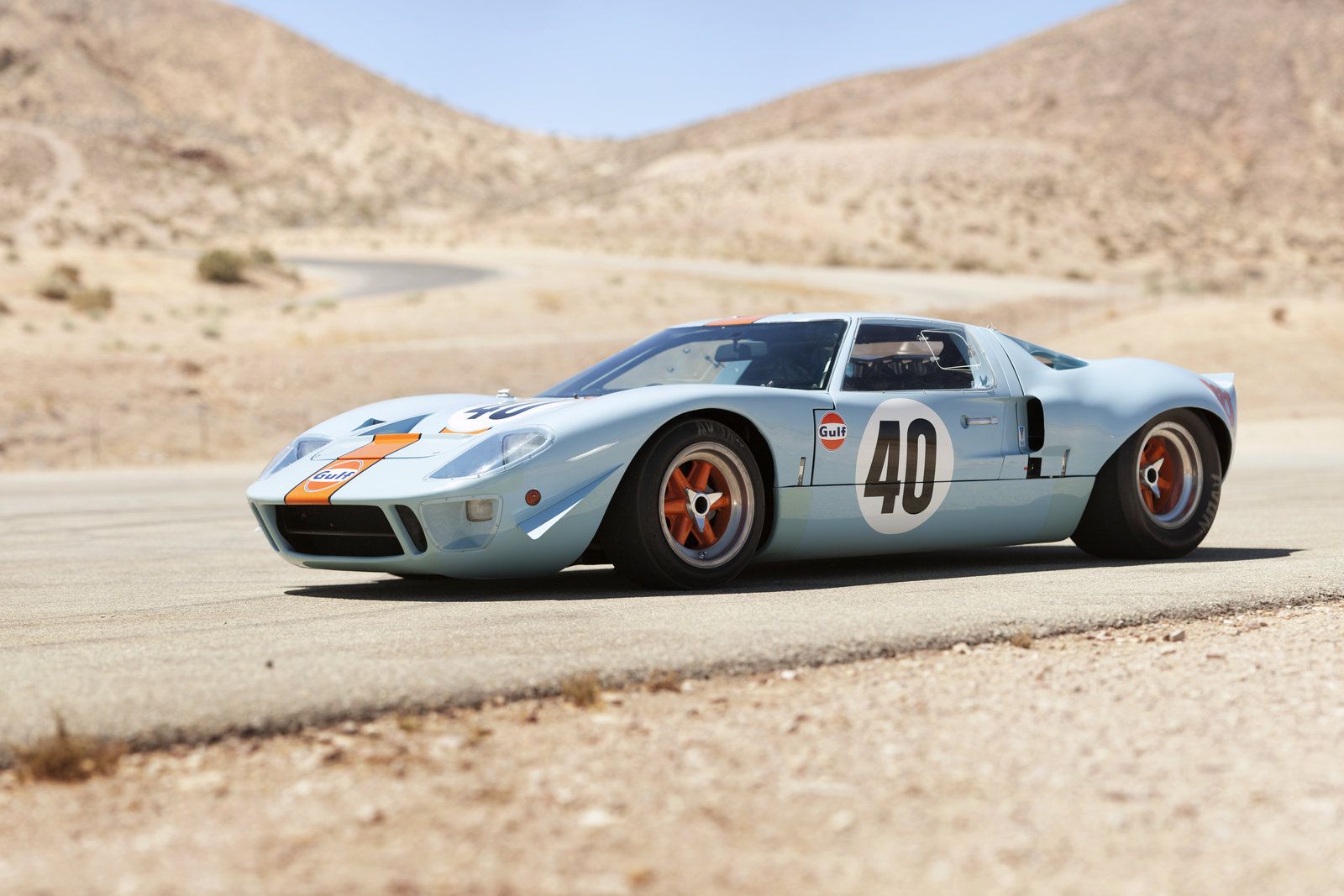 |
| The "Legendary" Ford GT40...you may have heard of this car before |
 |
| Back in the day on a section of the track called the "Mulsanne Straight," these cars pushed well past 200 mph, sending some drivers to their deaths in accidents. |
Ferrari started whining about Porsche's success in the late 80s, so they picked up their toys and moved to compete in Formula 1...where they were getting their butts kicked by Honda. Can you believe that??? The Honda engines in their F1 cars were so insanely powerful (1,200+ hp) and reliable that Ferrari teams were trying to steal Honda engineers with booze and women...and that's not an exaggeration. Do you remember a car called the Honda/Acura NSX? It was released in the early 90s as a "rival" to Ferrari's then-terrible road cars. The reason Honda made the NSX? To commemorate its dominance in F1.
As a further geek-note, you might also remember a car called the McLaren F1 released in the 90s? When sold, it was the world's most expensive and fastest road car. And originally, it was supposed to have a HONDA F1-derived engine, because Honda was so successful at the time. But because of hubris/arrogance, Honda refused to supply McLaren with their engines, so McLaren had to turn to BMW for a 600+ hp V12, which massively enhanced BMW's reputation.
Porsche was still kicking ass until the 90s, when in 1991, a largely ignored Mazda team upset everyone with their 787B racecar running the Wankel rotary engine. Nobody expected the ugly duckling to perform well at all, since it started 19th on the grid due to its slower qualifying pace versus Mercedes, Jaguar and Porsche. However, the trick up its sleeve was its rotary engine, which was not only reliable, but also fuel efficient relative to its power production. By the 20th hour of the race, the lead Mercedes C11 cars had essentially blown themselves up, allowing the little Mazda to breeze by and clench the first and only Japanese Le Mans victory, and the only victory with a nonconventional engine. The Europeans then whined enough to get the Mazda's engine banned for 1992 and beyond, thus Mazda never won again. Despite heroic efforts from rivals Toyota and Nissan since then, no other Japanese team has won either. Toyota is still fighting tooth and nail today to win its first Le Mans race.
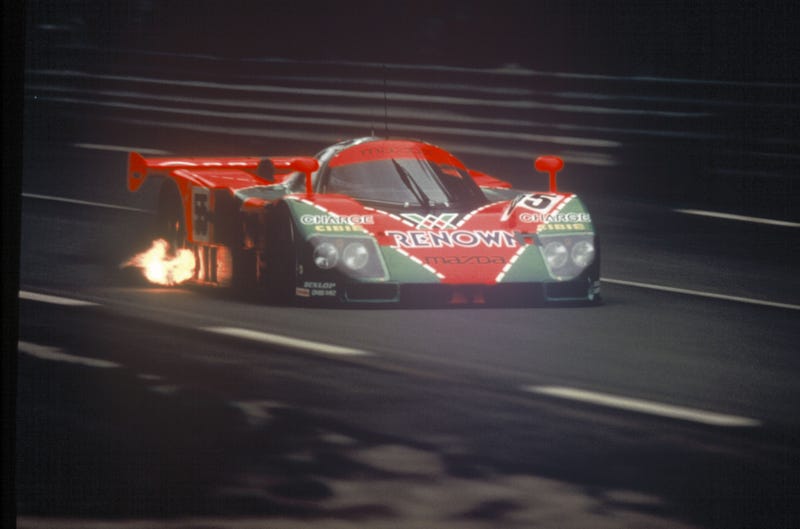 |
| Forgotten Hero: the Legendarily Spunky 787B. As you might guess, this is one of my favorite race cars. Not even the Mazda team believed they would win until the 20th hour! |
BMW won in 1999 with their V12 LMR (the white car above), followed by Toyota's GT1 in 2nd place. But the real surprise was newcomer Audi, running their R8R race car which finished 3rd. Not bad for a total rookie to run for the first time and actually finish on the podium.
 |
| Audi's R8R in 1999 surprised established marques as a newcomer finishing 3rd. |
What nobody saw coming, however, was the arrival of the R8R's successor as the Audi R8. In the year 2000 of its debut, the R8 finished 1st, 2nd and 3rd, wiping the floor with a triple podium finish.
But the R8's debut win wasn't just a lucky break. The R8 proceeded to win again in 2001, 2002, 2004, and 2005, losing once in 2003 to Bentley's Speed 8 race car...which was essentially an Audi R8! Why? Because Audi owns Bentley, and at the time, Audi wanted to sell more Bentleys. So they dressed up an R8 as a Speed 8, put their past R8 champion driver Tom Kristensen in it and sent him off to win Le Mans, which he did. Needless to say, Bentley then saw record sales of their new Continental GT.
So what was the secret to the R8's success? The secret was 2-fold:
- FSI: fuel-stratified injection. This is Audi-speak for direct injection, which they did not invent, but they did perfect it for performance and reliability. This enabled the R8 to maximize both power and efficiency, meaning faster laps and fewer gas stops on the racetrack. The FSI technology was then applied to the R8 road car, which allows my R8's V10 to return 25mpg on the freeway (yes, it's true). Today, many cars all use direct-injection.
- Interchangeable parts: the R8 was designed for nearly Lego-like access to parts most likely to wear out, such as transaxles and gearboxes. One R8 during a race had its rear section wrecked, but Audi engineers replaced its entire rear transaxle in under 5 minutes, then sent it back into the race. This design technology was also applied to the R8 road car, enabling it to win numerous times in other endurance races in the US and Europe.
After Audi won again with the R8 in 2001 and 2002, Audi decided to build a concept car commemorating its wins. That car was called the Le Mans Quattro.
 |
| As you can see, the production car actually looks like the concept version. |
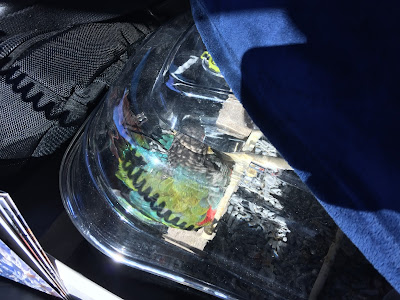 |
| Zoey's usual copilot location. |
 |
| Zoey on her lunch break. |
Unfortunately, I think that most people who see (or buy, even) R8s aren't aware of its incredible history, which is a shame given the original LMP1-R8's contribution to fuel efficiency and longevity. Hopefully my geek-out history lesson has shed some light on Le Mans racing, Audi and Iron Man's car for everyone before we get to the journey itself. As for my R8, it had ZERO issues throughout the 2,000 mile trip. None. Not even when I was in Colorado at 10,000ft in snow and salt. It just hauled all of my crap, including myself and my bird, and did what it was designed to do.
However, one thing it wasn't designed to do is to cause accidents...but it seems that it did cause one on the trip. More on that later!


